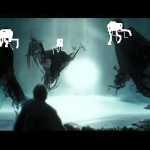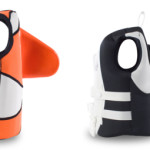
Deep Sea News’ Friday edition has a new mission – to “restore” small black and white figures from obscure scientific journals to their original color, hoping to give these images a new life and audience online. The paper’s citation will be included. Please contact us if you have something to share.
The image of Phakellia sponge is from the Johnson Sea Link submersible surveys of a Florida bioherm at 171 m depth in the west Atlantic. The sponge is about 2 ft tall.
I like it because it’s a good example of convergent evolution. You have to ask yourself, is Phakellia a sea-fan imposter? Or vice-versa? Two different phyla, porifera (sponges, pictured) and cnidaria (sea fan corals, pictured in link) independently evolved a fan-shaped morphology to acquire food in the benthic boundary layer.
The picture was originally published in an article by J Reed et al (2005) in the Bulletin of Marine Science, edited by Su Sponaugle, and published by Rosenstiel School of Marine and Atmospheric Science at the University of Miami. Special thanks to John Reed and Harbor Branch Oceanographic Institute.
Citation:
JK Reed, SA Pomponi, D Weaver, CK Paull, & AE Wright. 2005. Deep water sinkholes and bioherms of South Florida and the Pourtales Terrace- Habitat and Fauna. Bulletin of Marine Science, 77(2): 267-296.





